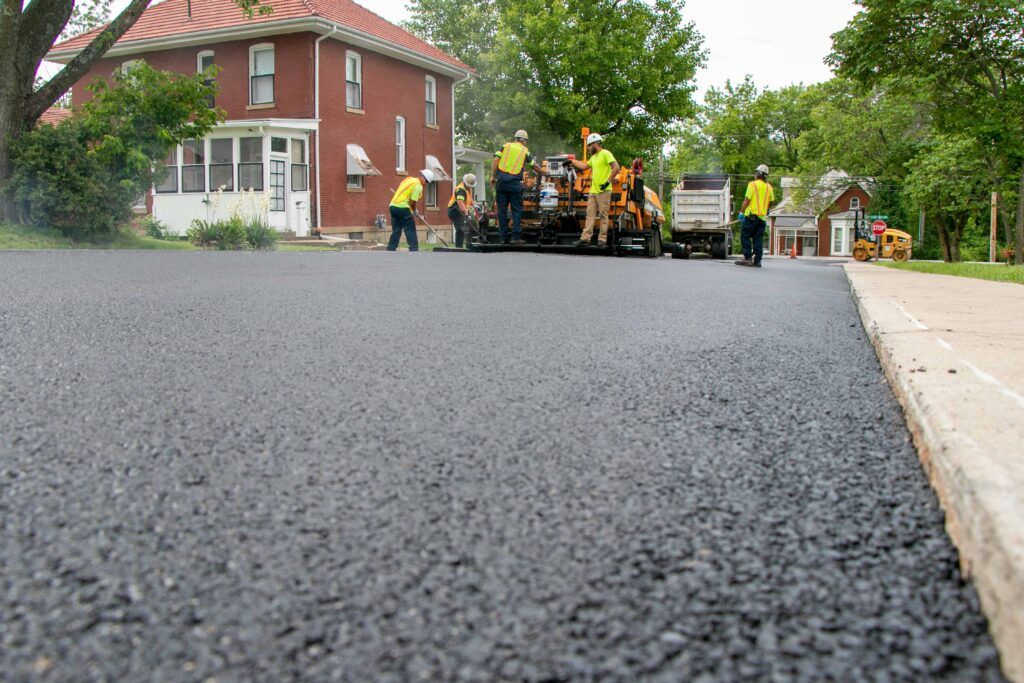Spring Cleaning for Asphalt Surfaces: Maintenance for Long-Lasting Pavement
Spring is the season of renewal, and while many businesses focus on landscaping and exterior improvements, one crucial area often gets overlooked—your asphalt pavement.
After enduring months of harsh winter weather, your parking lots, municipal roads, and other paved surfaces may be covered in debris, weakened by freeze-thaw cycles, and showing signs of wear.
A thorough spring cleaning and maintenance routine can help restore your asphalt’s integrity, improve curb appeal, and prevent costly repairs. This guide will walk you through the essential steps to refresh and protect your commercial asphalt surfaces this spring.
Start with a Thorough Inspection
Before cleaning and repairs, begin with a comprehensive assessment of your pavement’s condition. Walk around your property and look for signs of damage and issues.
- Cracks and potholes: Even tiny cracks can expand quickly if left unaddressed.
- Standing water: Poor drainage can accelerate pavement deterioration.
- Surface wear: Faded sealcoating or worn-down areas indicate the need for preventative maintenance.
- Faded parking lot striping: Clear markings improve safety and organization.
By identifying these issues early, you can plan for necessary repairs and avoid more significant problems as the year progresses.
Clear Debris and Sweep the Surface
Winter often leaves behind layers of dirt, sand, and debris that can block drainage systems and make your property look neglected. A proper spring cleanup should include a few simple tasks to get it fresh for use or repairs.
- Sweeping or power washing: Removing dirt and sand prevents premature wear and tear on the asphalt surface.
- Clearing storm drains and curbs: Ensuring proper water flow helps avoid pooling and erosion.
- Checking for oil and chemical stains: Addressing these early can prevent long-term damage to the pavement.
Regular cleaning enhances the look of your asphalt and allows you to spot and address damage before it worsens.

Address Asphalt Repairs Early
Once your pavement is clean, it’s time to tackle any damage left by winter. The freeze-thaw cycle standard in colder months can cause small cracks to expand, leading to potholes and structural issues. Some common repairs will go a long way.
- Crack filling: Sealing cracks early prevents moisture from seeping in and causing further deterioration.
- Pothole patching: Promptly filling potholes ensures a safer and smoother driving surface.
- Surface sealing: Small surface imperfections can be addressed with sealers to reinforce the asphalt’s strength.
Addressing these minor issues in the spring can help you avoid more extensive and expensive repairs later in the year.
Reapply Sealcoating for Protection
Sealcoating is one of the best ways to extend the lifespan of your asphalt pavement. This protective layer helps your asphalt in a couple of ways.
- Shield against UV rays , which can cause fading and brittleness.
- Improve the pavement’s appearance , giving it a fresh, dark finish.
Spring is ideal for sealcoating since moderate temperatures allow the sealant to cure appropriately. If it has been a few years since your last application, consider scheduling this service soon.
Refresh Parking Lot Markings and Striping
Well-defined parking lot markings are essential for safety and organization. However, over time, exposure to sunlight, rain, and vehicle traffic can cause striping to fade. Therefore, a spring refresh should include more than just asphalt repairs.
- Repainting parking space lines, crosswalks, and directional arrows.
- Ensuring ADA compliance with clear, accessible parking spaces.
- Adding or updating signage for traffic flow and designated areas.
A well-maintained parking lot enhances your property’s professional image and improves safety for drivers and pedestrians.
Evaluate Drainage and Prevent Water Damage
Water is one of the biggest threats to asphalt pavement. Poor drainage can lead to standing water, accelerating deterioration and increasing the risk of cracks and potholes.
- Clogged drains or blocked runoff areas.
- Low spots where water pools after rain.
- Erosion around the edges of your pavement.
Consider installing or adjusting drainage systems to redirect water from the asphalt surface if drainage issues are present.

Schedule Routine Maintenance for Long-Term Protection
Spring cleaning and maintenance are just the beginning. Establish a regular maintenance plan to keep your asphalt pavement in top condition year-round.
- Scheduled sweeping and debris removal.
- Routine inspections to catch early signs of wear.
- Periodic sealcoating and repainting as needed.
Working with a professional asphalt contractor can help ensure that your pavement receives the best care and attention throughout the year.
Give Leritz Busy Bee a Call
Spring is the perfect time to assess, clean, and protect your asphalt surfaces. Don’t wait until minor issues become major problems.
With decades of experience, our team has the expertise and equipment to handle new pavement installations, asphalt maintenance, and municipal paving projects.
Let us help you create durable, well-drained surfaces that stand the test of time. Contact us today to discuss your next project!
The post Spring Cleaning for Asphalt Surfaces: Maintenance for Long-Lasting Pavement appeared first on Leritz Busy Bee Asphalt Paving.







